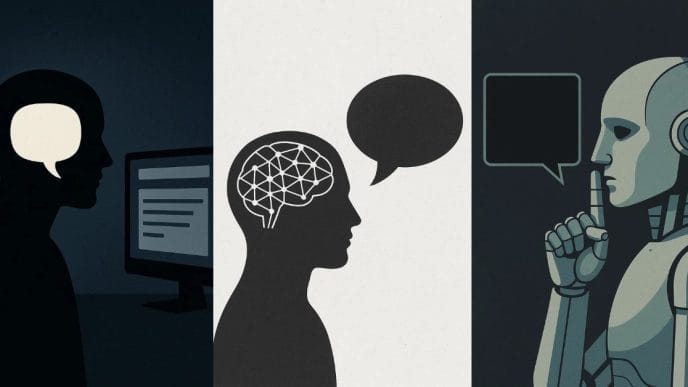In 2022, as missiles struck Kyiv, another battle unfolded online. Memes like “Saint Javelin” — a saintly figure wielding an American anti‑tank missile — went viral. It was not state propaganda. It was civilians weaponising humour, shaping global sympathy for Ukraine faster than any official briefing could.
India has seen similar dynamics. In 2019, the “Main Bhi Chowkidar” slogan morphed into endless memes, hijacking the election narrative on WhatsApp and Instagram. A slogan intended for rallies became an emotional identifier, both embraced and mocked, and far outpaced any policy debate.
These moments hint at a deeper shift: memes have become the most potent propaganda tool of our era. Cheap to make, impossible to contain, and perfectly tuned to algorithmic feeds, they are now shaping how democracies and conflicts unfold.
Why Memes Outpace the News Cycle
Traditional media moves in cycles: a press release, a news report, a follow‑up interview. Memes erupt instantly. A gaffe, a photo, a misstep can be turned into a meme within minutes and reach millions before any fact‑check or rebuttal is possible.
Why jokes travel faster than policy:
- Emotional hacking: Humour triggers dopamine and bypasses rational filters, making content more memorable than speeches or manifestos.
- Cultural fluency: A single cricket reference or Bollywood frame instantly signals tribe and solidarity. No explanation needed.
- Low friction sharing: Memes are bite‑sized, easy to remix, and frictionless to forward — ideal for WhatsApp’s closed networks.
In India, this speed is amplified by private messaging ecosystems. Family WhatsApp groups act as trusted sources, making memes feel credible even when they carry misinformation. The effect: narratives shift before journalists can even report the story.
From Grassroots Jokes to Coordinated Campaigns
Memes once felt spontaneous. Today, they are strategic. Political parties run IT cells that churn out memes in multiple languages, tuned for caste, region, and demographic sensitivities. These memes are not just reactive. They are designed months ahead of campaigns to pre‑empt narratives.
Internationally, Russia’s Internet Research Agency showed how memes can divide societies — from U.S. elections in 2016 to European referendums. China’s “50 Cent Army” uses meme‑like humour to deflect dissent. India’s meme ecosystem is following this path: grassroots creativity co‑opted into coordinated propaganda networks.
The genius and danger of weaponised humour is plausible deniability. Harmful messages can always hide behind “it is just a joke,” making regulation politically fraught and technically complex.
The Algorithm Loves a Punchline
Social platforms reward what keeps people scrolling. Memes are perfect bait: they provoke outrage, laughter, or belonging in seconds.
- High engagement loops: Memes trigger comments and shares, boosting algorithmic ranking.
- Endless remixability: A single meme format spawns thousands of variants, extending its shelf life far beyond a news headline.
- Policy penalty: Thoughtful analysis or policy breakdowns are too slow and too dry to compete.
During India’s 2024 elections, memes about fuel prices and unemployment consistently trended higher on Instagram than official manifestos. Politicians themselves joined in, posting self‑deprecating memes to appear relatable and algorithm‑friendly.
Platforms benefit from this virality. More engagement equals more ad revenue. The uncomfortable truth: meme chaos aligns with platform economics, leaving little incentive for meaningful moderation.
Learning to Read Between the Laughs
Fact‑checking headlines is not enough. Memes demand a new literacy: learning to decode humour that doubles as propaganda.
How to read a meme critically:
- Trace intent: Who benefits if this spreads? Does it harm or help a particular group?
- Spot the surge: A sudden flood of similar memes can signal coordinated campaigns.
- Look past irony: “Just joking” often hides serious messaging or bigotry.
- Check origins: Reverse search images. Recycled visuals are common in disinformation memes.
Teaching meme literacy in schools, workplaces, and media training is critical. Without it, citizens remain vulnerable to emotionally charged propaganda disguised as harmless fun.
The New Frontline of Political Influence
Memes are no longer cultural fluff. They are a low‑cost, high‑impact form of cyberwarfare. They shape elections, mobilise movements, and destabilise narratives faster than any press release or news broadcast.
For policymakers, the challenge is balancing free expression with protection against coordinated disinformation.
For tech companies, ignoring meme warfare invites regulatory backlash and trust erosion.
For citizens, the task is personal: laugh, but question who wrote the punchline.
The next big political battles will not be fought on debate stages. They will play out in meme pages, WhatsApp forwards, and algorithm‑driven feeds. Understanding memes is no longer optional. It is essential to understanding modern democracy itself.















